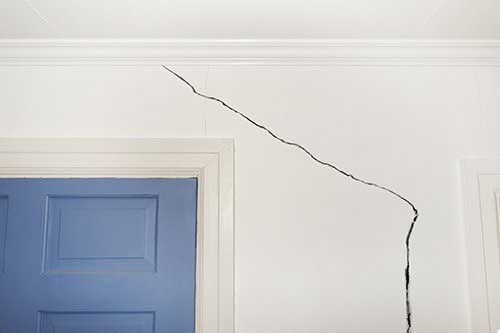5 Essential Components of Foundation Care

1. Basement Waterproofing
For the foundation, exterior waterproofing is especially important. That's because typical foundation walls are made from porous substances such as concrete. Without waterproofing from the outside, water can seep in and then freeze, causing cracks.
If your home doesn't already have exterior waterproofing for the foundation, be sure to arrange it right away.
2. DIY Inspections
DIY inspections are one of the most affordable maintenance tools you have as a homeowner. All you need is some basic knowledge of what the foundation should look like, what it looked like at your last inspection, and what warning signs to look out for.
Some foundation cracks are dangerous signs of incipient collapse, while others are more benign and just a sign of the natural settling a foundation does after it's poured. To help you tell the difference, keep an eye out for cracks that are:
- Diagonal or horizontal
- Wider than last time you checked
- Stair-step in shape
- Bulging inward
- Uneven (one side further in than the other)
Take a camera and yardstick with you on each inspection so you can visually record all the cracks and their sizes to help you compare at the next inspection. If you see any of the warning signs mentioned above or other irregularities such as a leaning wall, it's time to get a professional opinion. You may need foundation repairs.
3. Drainage and Grading
One of the reasons gutters are so important is because your foundation isn't designed to handle all the stormwater that drains off your roof. If that water enters the soil near the foundation, it can not only cause erosion but also increase the water pressure on the foundation wall. In worst-case scenarios, this can cause cracks and eventual collapse.
Your gutter system neatly collects all that water for you. But if your downspouts simply allow all that water to gush out freely as soon as it hits ground level, you're not making the best use of your gutter system. Ideally, you need to have downspout extensions that carry the water ten feet out before dumping it.
Poor grading can also cause increased water pressure. To prevent this, make sure the soil slopes gently away from your house on all four sides, about one inch per foot. You may need to occasionally regrade this slope due to erosion.
4. Professional Inspections
Although your foundation may not need a professional inspection every year if you're keeping a close eye on it, you should send for a professional as soon as you notice signs of a problem. That could mean finding a bulge in the wall during your inspection, or maybe your home's floors are sloping a little, or you've noticed the windows and doors are sticking.
Although foundation repairs may not be your idea of a good time, foundation damage can progress quickly if neglected, so don't be shy about sending for help.
5. Landscaping Interventions
Trees and bushes look great in your yard, but you may not realize how much damage they can do underground. You may have heard about tree roots posing a danger to septic systems and plumbing, but did you know they can also mess up your foundation? This is especially true of large trees, so if you have large trees near your house, you need to remove them.
Trees naturally extend their roots under the foundation of your house where it's cool and moist. But once the roots have developed a bit, they'll start sucking all the moisture out of the ground, causing it to dry up and shrink. Then the foundation settles more, often unevenly, with the side nearer the tree sinking further into the ground.
These five components will help you develop a solid program of foundation care. If you're in the market for a professional foundation inspection right now, get in touch with Bonilla Foundation Repair today.
BROWSE OUR WEBSITE
CONTACT INFORMATION
Address: 5326 Trafalgar Drive Houston, TX 77045
Phone: 713-434-8432
Fax: 713-434-8483
Email: bonillafoundation@sbcglobal.net
Licensed, bonded & insured






